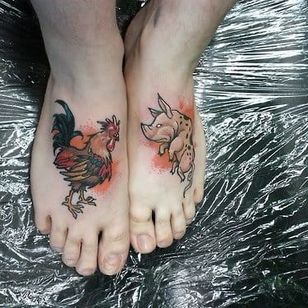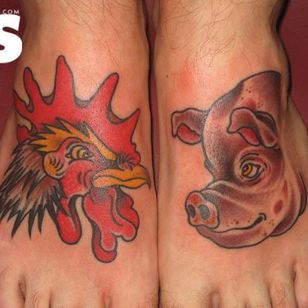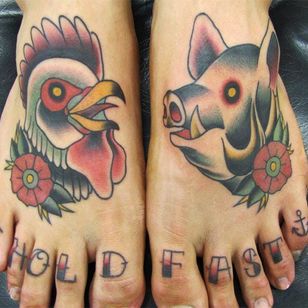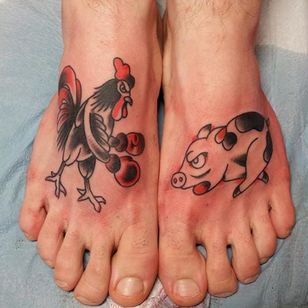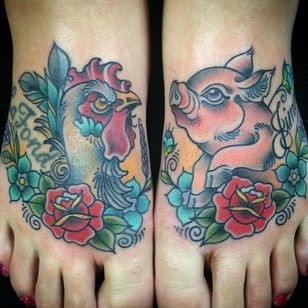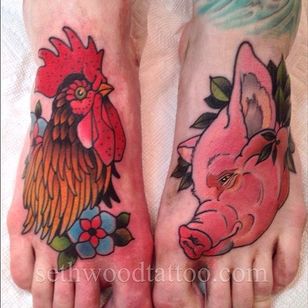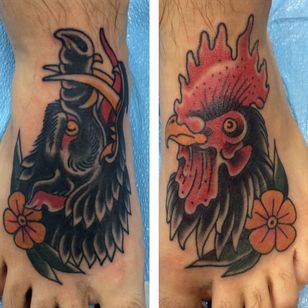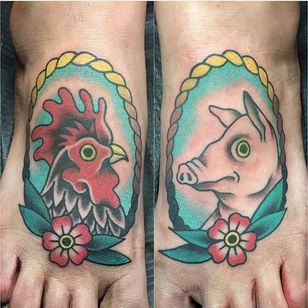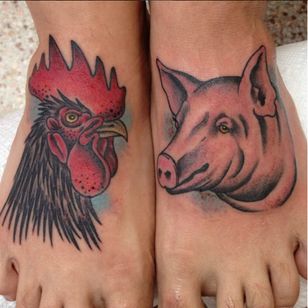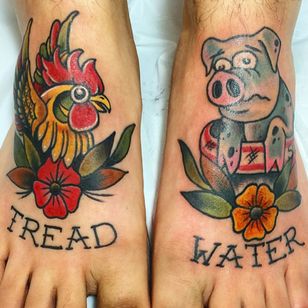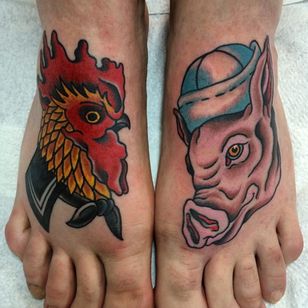A Maritime Classic: The Pig and Rooster Tattoo
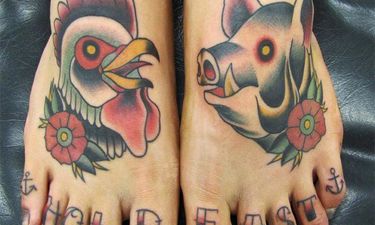
Summary
Here’s why sailors got tattoos of pigs and roosters on their feet to avoid watery graves, but millennials should still use life vests
Throughout the 19th and early 20th centuries, body art became prevalent within the shipping industry, and certain images took on meanings that reflected the lives of the sailors who wore them. Most old school tattoos were born out of the maritime world and the lives and adventures of sailors. Images of anchors became synonymous with stability, illustrations of lighthouses stood as beacons of hope...and the list goes on, which brings us to the most meaningful cargo of all — tattoos of pigs and roosters on seamen’s feet.
The Traditional Meaning of the Pig and Rooster Tattoo
Now at first glance a pig and rooster are not something you would associate with old school tattooing and it's maritime context but according to seafaring traditions a pig tattooed on one foot and a rooster on the other would keep a sailor from drowning!
The Origin of the Pig and Rooster Tattoo
Pigs and roosters make for some badass body art, but they can’t swim to save their own godforsaken lives. So why did sailors get tattoos of them as good luck charms to stave off drowning? Being the traditional tattoo enthusiasts we are, we went sniffing like hogs on a truffle hunt to get to the root of this maritime mystery. The origins of the superstitious symbolism is not fully known, but there are two popular reasons behind the meaning of the tattoo.
The first is that since neither the pig or rooster can swim they would want to get back to shore as quickly as possible if a sailors ship sunk.
The second and more probable one comes from the realization that when the boat refuses to float, there was nothing better to have around than a couple of the wooden crates the roosters and pigs were kept in on ships. In the case of a shipwreck, there was really only one viable option when the lifeboats filled up: find the most buoyant object within arm’s reach, hold on for your fucking life, and hope a shark doesn’t bite off a leg. At best, you’d be able to scramble atop a broken plank or, if you’re really fortunate, a bulkier item like a passenger’s chest or the door to the captain’s chamber, but chances are you’d end up in a pigsty or chicken coop. Indeed, the light weight crates would often float and because of this, the two animals had a higher survival rate in ship wrecks. The cages of these lovely animals prevented so many drownings (although exposure and the sharks got pretty much everybody if another ship didn’t come by soon) that sailors would get a pig and rooster tattoo for good luck in case such an event happened to them!
Whatever explanation you prefer, the pig and rooster tattoos were seen as a lucky maritime tattoo and still remain popular today, even in non-traditional styles!
What Does a Pig and Rooster Tattoo Mean Nowadays?
Though most of the people who sport pig and rooster tattoos today probably haven’t set foot aboard a commercial vessel, that doesn’t mean they aren’t looking for good luck when the shit hits the fan. Having this pair of unlikely creatures on right below your ankles could be the single saving grace for anyone at risk of drowning, be it in paperwork, parenthood, or the Hudson river.
To see more unsinkable body art, voyage to the tattooists’ Tattoodo profiles or Instagrams. Should you want a pig and rooster tattooed on your feet, we strongly advise you have one of them make it so that you’ll probably (and we emphasize probably) never drown.



